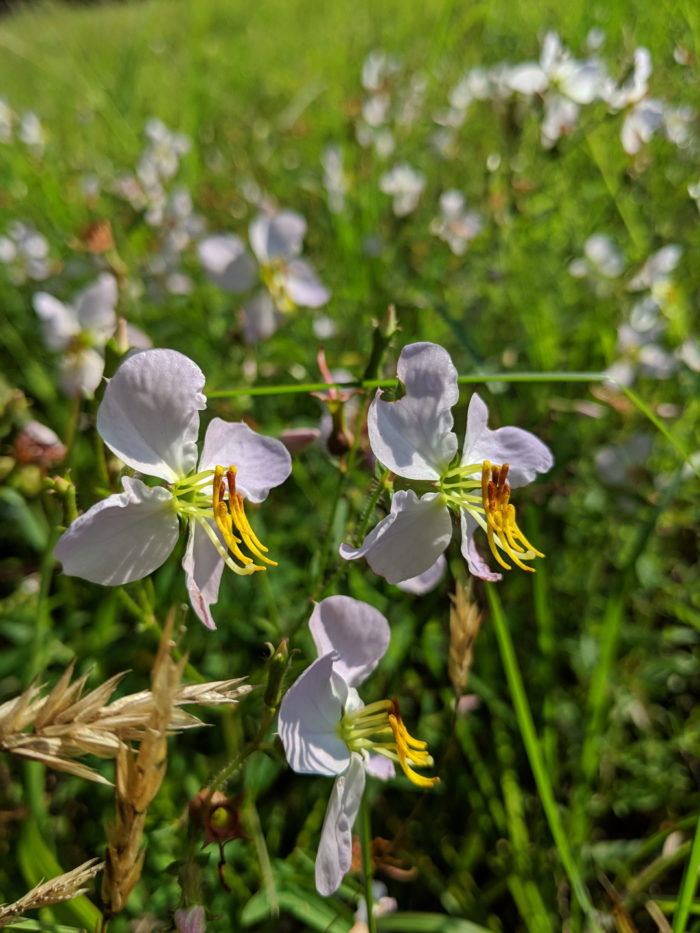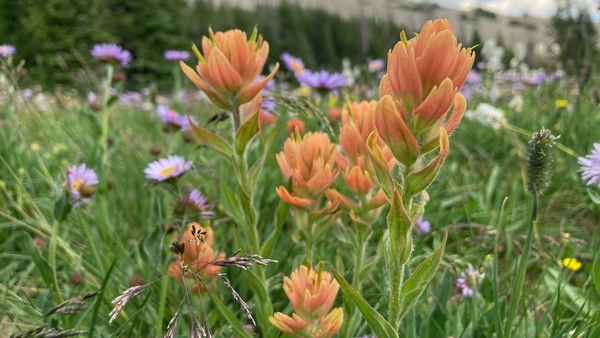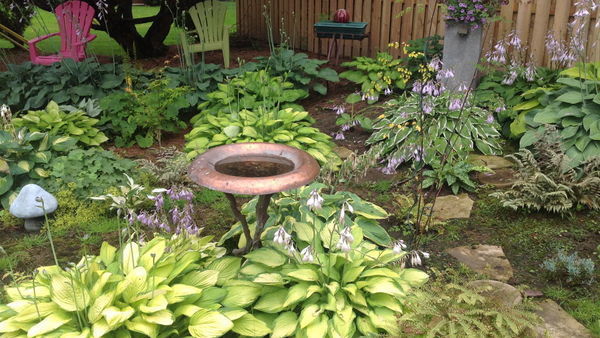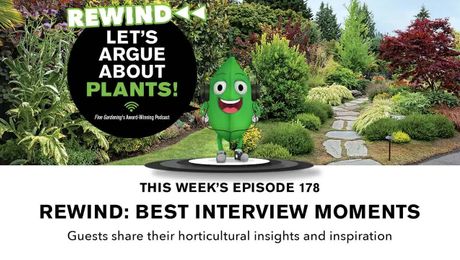
Whether they are growing naturally in meadows or woodlands, or if we’ve given them a home in our garden, native wildflowers are always worth treasuring and enjoying. Here are a few that have caught my eye (and camera) over the past few months.

Canadian columbine (Aquilegia canadensis, Zones 3–8) is one of my favorite wildflowers. Though the name implies that it is only Canadian, this species actually is found from Florida to Texas and all the way up into Canada. While many columbines are short lived, this species is more reliably perennial, especially if grown in lean, dry soil. It will tolerate shade, but it flowers much more profusely in sunnier conditions. The flowers provide nectar for hummingbirds, and the leaves provide food for a small butterfly called the columbine duskywing.

Lily leaf twayblade (Liparis lilifolia, Zones 3–8) is a delicate little orchid native to a wide swath of eastern North America. The flowers won’t exactly reach out and grab you, but their delicate beauty well rewards a closer look. Like many orchids, these plants depend on specific fungi in the soil to thrive, which means they’re difficult to grow in most gardens, but if you are lucky enough to have a natural population, treasure them! View our guide to starting wildflowers from seed here.

Atlantic pigeon wings (Clitoria mariana, Zones 3–10) grows in lightly shaded woodlands in sandy, dry soil over much of eastern North America. The trailing stems form a ground cover, and it produces these large, intricately formed flowers over a very long season, from early summer right into late fall.

Maryland meadow-beauty (Rhexia mariana, Zones 4–10) makes big colonies and produces these delicate pink flowers over a very long season in the summer. It prefers moist to wet soils in full sun, and is very durable. The large yellow anthers in the center of each flower are an adaptation to “buzz pollination.” The pollen is wrapped up inside those anthers, so most insects can’t get at it. Bumblebees land on each flower and buzz their wings at just the right frequency to vibrate the anthers and shake the pollen loose. This makes these plants a particularly good food source for bumblebees, many of which are facing steep population declines.

OK, so this isn’t a wildflower, but the swallowtail butterfly is another reason I love growing wildflowers and native plants! Native plants are great hosts for beautiful, interesting, and essential native insects, and I love it when my garden, and the world around me, is a good place for all sorts of creatures large and small to live.
Have a garden you’d like to share?
Have photos to share? We’d love to see your garden, a particular collection of plants you love, or a wonderful garden you had the chance to visit!
To submit, send 5-10 photos to GPOD@finegardening.com along with some information about the plants in the pictures and where you took the photos. We’d love to hear where you are located, how long you’ve been gardening, successes you are proud of, failures you learned from, hopes for the future, favorite plants, or funny stories from your garden.
If you want to send photos in separate emails to the GPOD email box that is just fine.
Have a mobile phone? Tag your photos on Facebook, Instagram or Twitter with #FineGardening!
You don’t have to be a professional garden photographer – check out our garden photography tips!
Do you receive the GPOD by email yet? Sign up here.
Fine Gardening Recommended Products

Buffalo-Style Gardens: Create a Quirky, One-of-a-Kind Private Garden with Eye-Catching Designs
Fine Gardening receives a commission for items purchased through links on this site, including Amazon Associates and other affiliate advertising programs.

Planting in a Post-Wild World: Designing Plant Communities for Resilient Landscapes
Fine Gardening receives a commission for items purchased through links on this site, including Amazon Associates and other affiliate advertising programs.


















Comments
Wonderful pics.
Lovely - especially the columbines.
Wow- the Maryland Meadow Beauty! Very interesting info about the bees that visit it. Thanks!
Native wildflowers always represent a very unique kind of beauty and attraction therefore watching them is always very enjoying as well as treasuring for me. Visit studyclerk.com homepage if you need help with English essay. In your article, the information about Canadian columbine was very new for me.
I love to read about this over http://www.essaywriting.net.nz website.
Log in or create an account to post a comment.
Sign up Log in